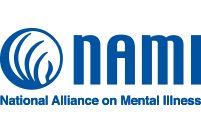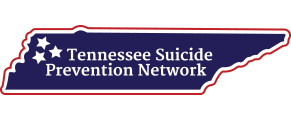No one experiences PTSD the same way as someone else. Understanding the signs, symptoms and side effects of PTSD is a key component toward starting the recovery journey.
Understanding PTSD
Learn about PTSD
Post-traumatic stress disorder (PTSD) is the development of certain symptoms following an event in which a child was exposed to something traumatic and terrifying that included physical harm being threatened, seen, or experienced. PTSD can develop out of one traumatic event or can be the result of ongoing traumatic events. While many people experience traumatic events in their lifetime, not all of them will go on to develop post-traumatic stress disorder. It is not unusual for people to have difficulties adjusting and coping after a traumatic event, but with proper care and love, most are able to successfully go on about their lives. However, for some children and teens, the symptoms of acute stress disorder become post-traumatic stress disorder. It’s very important to remember that it’s not the objective facts of the trauma, it’s the ways in which your child felt during and after the event.
Traumatic events overwhelm a child or teen’s ability to cope, leaving them feeling as though the world is a dangerous out-of-control place. The event deeply impacts the child’s thoughts of him or herself and the world, although the memory of the event is deeply encoded and different from normal memories. Rather than simply thinking about the event, the child continuously re-experiences the event, and the associated pain and fear of reliving the trauma causes the child to fear the memory as well as the event. PTSD has elements of intrusive thoughts, emotional numbing, social withdrawal and isolation, cognitive changes, and hyper-arousal. While this is an extremely distressing disorder, with proper support and treatment your child can overcome their PTSD.
Statistics
PTSD statistics
Studies have shown that approximately 15% to 43% of girls and 14% to 43% of boys will experience at least one traumatic event in their lifetime. Of these children, 3% to 15% of girls and 1% to 6% of boys will go on to develop post-traumatic stress disorder.
Causes and Risk Factors
Causes and risk factors for PTSD
The underlying cause of developing PTSD is experiencing or witnessing a traumatic event, however the reason why one individual develops PTSD while another does not is not as well understood. The causes of PTSD will vary based upon the severity of trauma, whether the trauma was repeated, the reaction of caregivers to the trauma, and the child’s proximity to the trauma. Some of the factors that may lead to the development of PTSD after one or more traumatic events include the following:
Genetic: Children who have a first-degree relative who has struggled with depression, PTSD, or other mental health disorders are at higher risk for the development of PTSD after a trauma. This risk is increased for children and teens who already struggle with depression or anxiety. Additionally, a child’s inborn personality or temperament may increase the likelihood of developing PTSD.
Physical: It’s been suggested that the ways in which a child’s brain regulates hormones and chemicals in response to stressful situations can lead to the development of PTSD. Females are at a higher risk for developing PTSD than males.
Environmental: Life experiences a child has gone through, including the amount and severity of the trauma can impact the development of PTSD. Generally, the longer-lasting, repeated traumas (especially those involving neglect, physical, sexual, emotional, or mental abuse) are more apt to cause PTSD.
Some of the most common traumatic events that can lead to the development of post-traumatic stress disorder include (but are not limited to):
- Neglect
- Domestic abuse
- Physical abuse
- Sexual abuse
- Emotional abuse
- Natural disasters
- Threat with a weapon
- Violent assaults, such as rape or physical attacks
- Car accidents
- Senseless acts of violence (such as school shootings)
- Witnessing another person go through traumatic events
- Diagnosis of life-threatening illnesses
Signs and Symptoms
Signs and symptoms of PTSD
Children and adolescents that live through a trauma will, more cases than not, display a number of different symptoms in various levels of severity. Symptom severity can depend upon availability of familial support and the child’s proximity to the event. Symptoms of PTSD usually develop within the first 3 months after the traumatic event, but can take as long a few months to years before they surface. Some of the symptoms of PTSD are easy to identify, while others may be more challenging to understand. Common symptoms of PTSD in children and teens may include:
Behavioral Symptoms:
- Reenactment of trauma through play
- Loss of interest in previously-enjoyed activities
- Angry outbursts
- Irritability
- Behavioral inhibition
- Reckless behaviors
- Regression
Physical Symptoms:
- Smaller hippocampal volume
- Altered metabolism in areas of the brain involved in perception of threat
- Low basal cortisol levels
- Feeling as though the event is happening all over again
- Sleep disturbances
- Complaints of headaches and stomach aches
- Difficulties with physical contact
Cognitive Symptoms:
- Feeling as though the trauma is happening again
- Trouble concentrating in school
- Negative cognitive development
- Altered cognitive functioning
- Increased arousal and hyper-vigilance
- Jumbled, out of order recollection of the event
Psychosocial Symptoms:
- Emotional numbing
- Sadness
- Guilt
- Low self-esteem
- Inability to trust others
- Avoidance of memories or situations that trigger memories of the event
- Flashbacks of the event
- Intrusive memories of the event
- Nightmares and night terrors
- Fears about death
- Worry
Effects
Effects of PTSD
It is not uncommon for many individuals to not seek professional help for post-traumatic stress disorder due to the fact that they are unable to determine the link between the event and their symptoms. Additionally, most of the time individuals have a hard time discussing the event or trauma because it adds to their feelings of anxiety and dread. After experiencing a traumatic event it is essential to seek professional help for a child or teen so that they can learn to develop the coping skills necessary to resume their daily lives. Untreated PTSD may result in a number of unpleasant effects that may include:
- Out-of-place sexual behaviors
- Substance use
- Alcohol use
- Borderline personality disorder
- Oppositional defiant disorder
- Conduct disorder
- Self-harm
- Cardiovascular disease
- Pain disorders
- Anxiety disorders
- Depression
- Aggression
- Inability to form bonds with others
- Autoimmune diseases
- Musculoskeletal conditions
- Suicidal thoughts and behaviors
Co-Occurring Disorders
PTSD and co-occurring disorders
While post-traumatic stress disorder develops as a result of experiencing or exposure to a traumatic event, there are some disorders known to co-occur with PTSD. These may include:
- Childhood anxiety disorders
- Childhood depression
- Substance abuse and addiction












